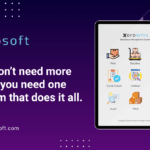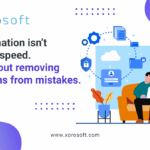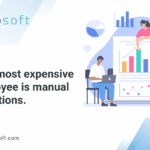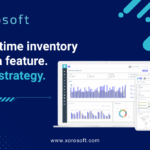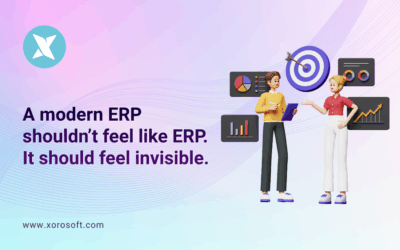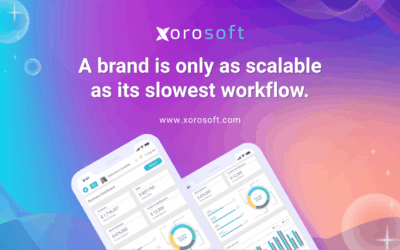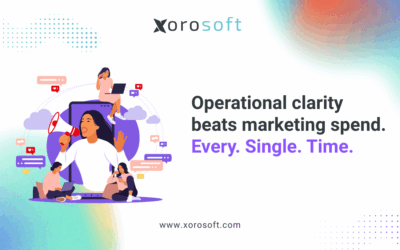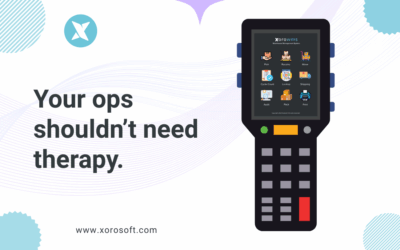
Introduction to XoroERP and ERP Systems
ERP systems are powerful software solutions that integrate various business functions, such as accounting, inventory management, human resources, and project management, into a single, centralized platform. XoroERP is a leading ERP system that has been specifically tailored to meet the needs of project-driven organizations like ours.
By consolidating all our critical business data and processes into a single, unified system, XoroERP promises to enhance our visibility, improve our decision-making, and streamline our project management workflows. As we explore the pros and cons of this solution, we’ll gain a better understanding of how it can potentially transform the way we manage our projects.
The Benefits of Using an ERP System in Project Management
Implementing an ERP system like XoroERP can bring a host of benefits to our project management efforts. Here are some of the key advantages we can expect:
- Improved Visibility and Transparency: With all our project-related data, such as budgets, timelines, and resource allocations, centralized in a single system, we’ll have a much clearer and more comprehensive view of our project portfolios. This enhanced visibility can help us make more informed decisions and identify potential bottlenecks or risks early on.
- Streamlined Processes and Automation: ERP systems like XoroERP can automate many of our routine tasks, such as invoicing, expense tracking, and progress reporting. This can free up our team’s time and energy, allowing us to focus on more strategic aspects of project management.
- Enhanced Collaboration and Communication: By providing a centralized platform for all project-related information and communications, XoroERP can foster better collaboration among our team members, stakeholders, and clients. This can lead to improved coordination, reduced errors, and more effective problem-solving.
- Improved Resource Management: With XoroERP’s robust resource planning and allocation capabilities, we can better manage our team’s workloads, ensure optimal utilization of our assets, and make more informed decisions about staffing and budgeting.
- Stronger Financial Control and Reporting: XoroERP’s integrated accounting and financial management features can help us maintain tighter control over our project budgets, generate accurate financial reports, and make more informed financial decisions.
These are just a few of the many benefits that an ERP system like XoroERP can bring to our project management efforts. As we delve deeper into the solution’s features, we’ll uncover even more ways in which it can streamline our operations and drive our project success.
Key Features of XoroERP
XoroERP is a comprehensive ERP solution that offers a wide range of features tailored to the needs of project-driven organizations. Some of the key features that have caught our attention include:
- Project Management: XoroERP provides a robust project management module that allows us to plan, track, and monitor our projects from a single platform. This includes features like Gantt charts, resource allocation, and progress reporting.
- Financial Management: The solution’s integrated accounting and financial management capabilities enable us to manage our project budgets, invoicing, and cash flow with greater accuracy and efficiency.
- Inventory Management: XoroERP’s inventory management module helps us keep tight control over our project-related supplies and materials, ensuring that we have the right resources available when and where we need them.
- Human Resource Management: The solution’s HR features, such as employee timesheets, leave management, and performance tracking, can help us better manage our project teams and ensure optimal productivity.
- Business Intelligence and Reporting: XoroERP’s robust reporting and analytics capabilities provide us with valuable insights into our project performance, allowing us to make data-driven decisions and identify areas for improvement.
- Customization and Integration: The solution is highly customizable, allowing us to tailor it to our specific project management needs. It also offers seamless integration with a wide range of third-party tools and applications, further enhancing its functionality.
As we explore these features in more detail, we’ll gain a deeper understanding of how XoroERP can be leveraged to streamline our project management processes and drive our overall organizational efficiency.
Pros of Using XoroERP in Project Management
After carefully examining the features and capabilities of XoroERP, we’ve identified several key advantages that this ERP system can offer our project management efforts:
- Improved Visibility and Transparency: XoroERP’s centralized project management module provides us with a comprehensive, real-time view of all our ongoing projects, including budgets, timelines, and resource allocations. This enhanced visibility can help us make more informed decisions and proactively address any issues that may arise.
- Streamlined Processes and Automation: The solution’s automation features, such as automated invoicing, expense tracking, and progress reporting, can significantly reduce the time and effort required to manage our projects, allowing our team to focus on more strategic tasks.
- Enhanced Collaboration and Communication: XoroERP’s integrated communication and collaboration tools, such as project-specific chat channels and document sharing capabilities, can foster better teamwork and information-sharing among our project stakeholders.
- Robust Resource Management: The solution’s advanced resource planning and allocation features can help us optimize the utilization of our team members, equipment, and other assets, ensuring that we have the right resources in place to execute our projects successfully.
- Improved Financial Control and Reporting: XoroERP’s comprehensive financial management module provides us with detailed project-level budgeting, invoicing, and reporting capabilities, enabling us to maintain tighter control over our project finances and make more informed financial decisions.
- Scalability and Customization: As our project management needs evolve, XoroERP’s scalable architecture and customization options can help us adapt the solution to our changing requirements, ensuring that it continues to meet our needs over the long term.
These are just a few of the many advantages that XoroERP can bring to our project management efforts. As we weigh the pros and cons of this ERP system, it’s clear that the benefits it offers can have a significant positive impact on our overall project performance and organizational efficiency.
Cons of Using XoroERP in Project Management
While XoroERP offers numerous benefits, it’s important for us to also consider the potential drawbacks and challenges that may arise from implementing this ERP system. Here are some of the key cons we’ve identified:
- Implementation Complexity: Deploying a comprehensive ERP system like XoroERP can be a complex and time-consuming process, requiring significant planning, training, and change management efforts. This can be a significant investment of time and resources, which may be a concern for our organization.
- Data Migration Challenges: Transitioning our existing project management data and processes to the XoroERP platform may present some challenges, particularly if we have to migrate data from multiple legacy systems. Ensuring a smooth and accurate data migration will be crucial to the success of our implementation.
- User Adoption and Training: Onboarding our team to the new XoroERP system may require extensive training and change management efforts to ensure that everyone is comfortable using the solution and adopting the new processes. Resistance to change can be a significant barrier to successful implementation.
- Ongoing Maintenance and Support: As with any enterprise-level software solution, XoroERP will require ongoing maintenance, updates, and technical support. Ensuring that we have the necessary resources and expertise in-house or through a reliable service provider can add to the overall cost of ownership.
- Potential Integration Challenges: While XoroERP offers integration capabilities with various third-party tools, seamlessly integrating the solution with our existing systems and workflows may present some technical and operational challenges that we’ll need to address.
- Customization Limitations: While XoroERP is a highly customizable solution, there may be certain unique requirements or processes that are specific to our organization and may not be easily accommodated within the standard feature set. This could limit the solution’s flexibility and require additional development efforts.
These potential drawbacks are important considerations as we evaluate the feasibility and suitability of XoroERP for our project management needs. By carefully weighing the pros and cons, we can make a more informed decision about whether this ERP system is the right fit for our organization.
XoroERP vs. Other ERP Solutions
As we explore the potential of XoroERP, it’s also important to compare it to other ERP solutions available in the market. This can help us better understand the unique strengths and weaknesses of the XoroERP system and make a more informed decision about its suitability for our project management needs.
Some of the key ERP solutions that we’ve considered include:
| ERP Solution | Strengths | Weaknesses |
|---|---|---|
| Xorosoft ERP | – Tailored for project-driven organizations – Robust project management features – Integrated financial and inventory management |
– Higher implementation complexity – Potential integration challenges with legacy systems – Steeper learning curve for users |
| SAP S/4HANA | – Comprehensive enterprise-wide functionality – Strong financial and supply chain management – Scalable and highly customizable |
– Higher cost of ownership – Longer implementation timelines – More complex user interface |
| Microsoft Dynamics 365 | – Seamless integration with Microsoft ecosystem – User-friendly interface – Flexible deployment options |
– Limited project management capabilities – Potential compatibility issues with legacy systems – Ongoing subscription costs |
| Oracle ERP Cloud | – Scalable and cloud-based architecture – Robust financial management and reporting – Strong data security and compliance features |
– Limited customization options – Higher subscription fees – Potential vendor lock-in concerns |
Based on our analysis, Xorosoft ERP appears to be the most tailored solution for our project management needs, with its strong focus on project-specific features and integrated functionality. However, we’ll need to carefully weigh the implementation complexity and potential integration challenges against the benefits it offers.
XoroERP’s Inventory Management Capabilities
One of the key features that has caught our attention in XoroERP is its robust inventory management module. As a project-driven organization, effectively managing our project-related supplies, materials, and equipment is crucial to the success of our operations.
XoroERP’s inventory management capabilities include:
- Real-time inventory tracking and visibility
- Automated stock replenishment and reordering
- Detailed inventory reporting and analytics
- Integrated procurement and purchasing workflows
- Barcode scanning and RFID integration for improved accuracy
- Warehouse management and logistics planning
By centralizing our inventory data and processes within the XoroERP system, we can expect to see several benefits, including:
- Reduced inventory carrying costs: With better visibility and control over our stock levels, we can optimize our inventory holdings and minimize the resources tied up in excess or obsolete materials.
- Improved project planning and execution: Knowing the availability and location of our project-related supplies and equipment can help us plan and execute our projects more effectively, reducing delays and ensuring that we have the right resources in place when and where we need them.
- Enhanced logistics and supply chain management: XoroERP’s integrated procurement and logistics features can help us streamline our supply chain processes, improve supplier collaboration, and ensure timely delivery of materials to our project sites.
- Stronger financial control and reporting: The solution’s detailed inventory reporting and integration with our financial management module can provide us with greater visibility into our project-related costs and help us make more informed budgeting and purchasing decisions.
As we evaluate the implementation of XoroERP, its inventory management capabilities will be a key consideration in determining whether this ERP system is the right fit for our project management needs.
XoroERP’s Accounting and Financial Management Features
Another critical aspect of project management is the effective management of our financial resources and accounting processes. XoroERP’s comprehensive financial management module promises to streamline our project-related accounting and reporting, offering several key benefits:
- Project-level Budgeting and Forecasting: XoroERP’s budgeting and forecasting tools allow us to create detailed project-specific budgets, track expenses, and generate accurate financial projections to support our decision-making.
- Integrated Invoicing and Accounts Receivable: The solution’s invoicing and accounts receivable features enable us to efficiently manage our client billing and collections, ensuring timely payment and improved cash flow.
- Expense Management and Reimbursement: XoroERP’s expense management module simplifies the process of tracking, approving, and reimbursing project-related expenses, reducing the administrative burden on our team.
- Financial Reporting and Analytics: The solution’s robust reporting capabilities provide us with a wide range of financial reports, including project profitability, cost-to-complete, and earned value analysis, giving us valuable insights into our project performance.
- Compliance and Audit Trail: XoroERP’s financial management features, combined with its comprehensive audit trail and data security measures, can help us maintain compliance with relevant accounting standards and regulations.
By integrating our project-level financial data within the XoroERP system, we can expect to see improved financial control, better decision-making, and enhanced transparency across our project portfolio. This can be a critical advantage in ensuring the successful delivery and profitability of our projects.
How XoroERP Can Streamline Project Management Processes
As we delve deeper into the capabilities of XoroERP, it becomes clear that this ERP system has the potential to significantly streamline our project management processes. Here are some of the key ways in which XoroERP can help us achieve greater efficiency and effectiveness:
- Project Planning and Scheduling: XoroERP’s project management module provides us with powerful tools for creating and managing project plans, including Gantt charts, resource allocation, and task dependencies. This can help us develop more accurate and realistic project schedules.
- Resource Management: The solution’s resource planning and allocation features enable us to better manage our team’s workloads, ensuring that we have the right people, skills, and equipment available to execute our projects successfully.
- Collaboration and Communication: XoroERP’s integrated communication and document management tools facilitate better collaboration among our project team members, stakeholders, and clients, reducing the risk of miscommunication and information silos.
- Progress Tracking and Reporting: The solution’s comprehensive project tracking and reporting capabilities provide us with real-time visibility into the status of our projects, allowing us to identify and address issues proactively.
- Risk and Issue Management: XoroERP’s risk management features, such as the ability to log, track, and mitigate project risks and issues, can help us maintain better control over our project portfolios and ensure successful project delivery.
- Integration with Other Systems: The solution’s open architecture and API-based integration capabilities allow us to seamlessly connect XoroERP with other critical business systems, such as our customer relationship management (CRM) or enterprise content management (ECM) platforms, further enhancing our project management capabilities.
By streamlining these core project management processes, XoroERP can help us improve our overall project performance, increase our team’s productivity, and deliver greater value to our clients.
Considerations Before Implementing XoroERP in Your Organization
As we evaluate the potential of XoroERP for our project management needs, there are several key considerations we should keep in mind:
- Organizational Readiness: Assess the level of buy-in and support from our leadership team, as well as the overall organizational readiness to embrace the changes that come with implementing a new ERP system.
- Integration and Data Migration: Carefully evaluate the effort and resources required to integrate XoroERP with our existing systems and migrate our project data to the new platform.
- Change Management: Develop a comprehensive change management strategy to ensure a smooth transition for our team, including extensive training, communication, and support.
- Customization and Configuration: Determine the extent of customization and configuration required to tailor XoroERP to our specific project management needs, and ensure that the solution can be adapted as our requirements evolve.
- Ongoing Maintenance and Support: Assess our internal capabilities and resources to manage the ongoing maintenance, updates, and technical support for the XoroERP system, or identify a reliable service provider to partner with.
- Cost of Ownership: Carefully evaluate the total cost of ownership, including the initial implementation costs, subscription or licensing fees, and the ongoing operational expenses associated with running the XoroERP system.
By thoroughly addressing these considerations, we can increase the chances of a successful XoroERP implementation and ensure that the solution delivers the intended benefits to our project management efforts.
Conclusion: Is XoroERP the Right ERP System In conclusion, after carefully weighing the pros and cons of XoroERP, we believe this comprehensive ERP system has the potential to significantly enhance our project management capabilities and drive our organizational efficiency.
The solution’s robust project management features, integrated financial and inventory management, and streamlined processes can help us improve visibility, optimize resource utilization, and make more informed decisions across our project portfolio. Additionally, the platform’s customization options and integration capabilities allow us to tailor the system to our unique requirements, ensuring a seamless fit with our existing workflows.
However, the implementation complexity, data migration challenges, and ongoing maintenance considerations will require a significant investment of time and resources. Careful planning, change management, and a thorough assessment of our organizational readiness will be crucial to the success of the XoroERP deployment.
Ultimately, the decision to implement XoroERP will depend on our specific project management needs, the alignment with our strategic objectives, and the availability of the necessary resources and expertise to support the implementation and long-term maintenance of the system.
To explore the potential of XoroERP further, I encourage you to schedule a demo with the Xorosoft team. Their experts can provide a personalized walkthrough of the solution’s features and capabilities, and help us determine if XoroERP is the right fit for our project management requirements. Book a demo today and take the first step towards streamlining your project management processes with this powerful ERP system.

